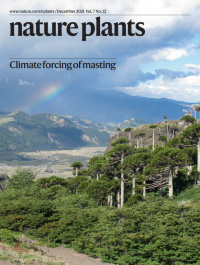- EN - English
- CN - 中文
13CO2-labelling and Sampling in Algae for Flux Analysis of Photosynthetic and Central Carbon Metabolism
藻类中的 13CO2 标记和采样用于光合作用和中心碳代谢通量分析
(*contributed equally to this work) 发布: 2023年09月05日第13卷第17期 DOI: 10.21769/BioProtoc.4808 浏览次数: 1856
评审: John P PhelanAnonymous reviewer(s)
Abstract
The flux in photosynthesis can be studied by performing 13CO2 pulse labelling and analysing the temporal labelling kinetics of metabolic intermediates using gas or liquid chromatography linked to mass spectrometry. Metabolic flux analysis (MFA) is the primary approach for analysing metabolic network function and quantifying intracellular metabolic fluxes. Different MFA approaches differ based on the metabolic state (steady vs. non-steady state) and the use of stable isotope tracers. The main methodology used to investigate metabolic systems is metabolite steady state associated with stable isotope labelling experiments. Specifically, in biological systems like photoautotrophic organisms, isotopic non-stationary 13C metabolic flux analysis at metabolic steady state with transient isotopic labelling (13C-INST-MFA) is required. The common requirement for metabolic steady state, alongside its very short half-timed reactions, complicates robust MFA of photosynthetic metabolism. While custom gas chambers design has addressed these challenges in various model plants, no similar tools were developed for liquid photosynthetic cultures (e.g., algae, cyanobacteria), where diffusion and equilibration of inorganic carbon species in the medium entails a new dimension of complexity. Recently, a novel tailor-made microfluidics labelling system has been introduced, supplying short 13CO2 pulses at steady state, and resolving fluxes across most photosynthetic metabolic pathways in algae. The system involves injecting algal cultures and medium containing pre-equilibrated inorganic 13C into a microfluidic mixer, followed by rapid metabolic quenching, enabling precise seconds-level label pulses. This was complemented by a 13CO2-bubbling-based open labelling system (photobioreactor), allowing long pulses (minutes–hours) required for investigating fluxes into central C metabolism and major products. This combined labelling procedure provides a comprehensive fluxome cover for most algal photosynthetic and central C metabolism pathways, thus allowing comparative flux analyses across algae and plants.
Keywords: Photosynthesis (光合作用)Background
Over the last two decades, numerous analytical and computational approaches have emerged for deciphering metabolic networks. Understanding metabolic pathways and their regulation is crucial for metabolic engineering, biotechnology, or pharmacology, which can be explored through metabolic flux analysis (MFA) studies. Metabolite levels do not provide reliable information about pathway flux, due to its complex relationship with protein activity and substrate level (Blank and Sauer, 2004). Major progress has been made through the use of isotopic labelling, allowing a better and more accurate assessment of the concentration of metabolites by NMR, gas chromatography (GC), or liquid chromatography (LC) mass spectrometry (MS) and combinations thereof (Niedenführ et al., 2015). Various tools have been developed alongside computational and mathematical modelling methods (e.g., INCA, METRAN, SUMOFLUX), aiming to fit a theoretical model to estimate metabolic fluxes (Heise et al., 2015).
Isotopic non-stationary 13C metabolic flux analysis (13C-INST-MFA) offers a robust framework for flux estimation in single carbon substrate–based systems (e.g., autotrophic, methanotrophic) (Jazmin and Young, 2013). Aiming to resolve differential balance equations for the time-dependent labelling of intermediate metabolites, 13C-INST-MFA is ideally suited to slowly labelled systems (e.g., due to large intermediate pools or pathway bottlenecks). Thus, as the entry point for the single-carbon substrate system of most photoautotrophs, photosynthetic metabolism represents a unique challenge for 13C-INST-MFA, due to its relatively small intermediate pool size and, consequently, very rapid turnover rates (Szecowka et al., 2013; Heise et al., 2014; Abernathy et al., 2017; Allen and Young, 2020). Despite this challenge, this approach has been widely used in the past decade to estimate fluxes in photoautotrophic systems, ranging from cyanobacteria to land plants (Ma et al., 2014; Adebiyi et al., 2015; Cheah and Young, 2018; Wieloch, 2021; Xu et al., 2022).
Supported by the development of targeted analytical methodology (Arrivault et al., 2009 and 2015) and tailored labelling setups (Szecowka et al., 2013; Arrivault et al., 2017), these studies provided robust quantitative data on fluxes through central C metabolism and photosynthesis. The pioneering study of Szecowka and colleagues (Szecowka et al., 2013) has obtained the fluxes in canonical pathways of photosynthetic carbon metabolism in Arabidopsis rosette based on a combined 13CO2-labelling/GC- and LC-tandem MS/MS approach. Similar achievements have been made in Arabidopsis (under different conditions) (Ma et al., 2014), maize (Arrivault et al., 2017), tobacco (Chu et al., 2022), and Camelina sativa (Xu et al., 2021), but only partly in algae (Xiong et al., 2010; Wu et al., 2015) due to the experimentally challenging supply of rapidly labelled inorganic carbon pulses.
Using a tailor-made microfluidics labelling system to supply 13CO2 at steady state, we investigated in vivo labelling kinetics in intermediates of the Calvin Benson cycle and sugar, starch, organic acid, and amino acid synthesis pathways, and flux into protein and lipids, in several model and non-model green algae (Treves et al., 2022). Our system allows sampling at the 0–40 s pulse timescale in a highly reproducible manner, yielding high quality data. Furthermore, when combined with traditional labelling setups such as open systems with bubbling of 13CO2 for longer pulse times, our protocol, which is applicable to other unicellular photoautotrophic systems, largely improves the precision of flux estimates through the application of 13C-INST-MFA.
Materials and reagents
Inorganic 13C (Sigma-Aldrich, catalog number: 364592)
N2 gas (Oxygen and Argon Works Ltd.)
O2 gas (Oxygen and Argon Works Ltd.)
12CO2 gas (Oxygen and Argon Works Ltd.)
13CO2 (isotopic purity 99-atom percentage) gas (Sigma-Aldrich, catalog number: 364592-10L-EU)
Lime soda (Merck Millipore, catalog number: 1068395000)
Chlamydomonas reinhardtii strain CC-124 (UTEX Culture Collection of Algae)
Chlorella sorokiniana UTEX 1663 (UTEX Culture Collection of Algae)
Chlorella ohadii
HEPES (Sigma-Aldrich, catalog number: 54457)
Sodium hydroxide (NaOH) (Sigma-Aldrich, catalog number: 655104)
Calcium chloride (CaCl2) (Sigma-Aldrich, catalog number: C4901)
Ammonium chloride (NH4Cl) (Sigma-Aldrich, catalog number: 213330)
Magnesium sulphate heptahydrate (MgSO4·7H2O) (Sigma-Aldrich, catalog number: 230391)
Dipotassium phosphate (K2HPO4) (Sigma-Aldrich, catalog number: P3786)
Monopotassium phosphate (KH2PO4) (Sigma-Aldrich, catalog number: PX1562)
Ethylenediaminetetraacetic acid (EDTA) (Sigma-Aldrich, catalog number: E9884)
Boric acid (BO3H3) (Sigma-Aldrich, catalog number: B0394)
Zinc sulphate heptahydrate (ZnSO4·7H2O) (Sigma-Aldrich, catalog number: 221376)
Manganese(II) chloride tetrahydrate (MnCl2·4H2O) (Sigma-Aldrich, catalog number: 221279)
Iron(II) sulphate heptahydrate (FeSO4·7H2O) (Sigma-Aldrich, catalog number: 215422)
Cobalt(II) chloride hexahydrate (CoCl2·6H2O) (Sigma-Aldrich, catalog number: 255599)
Copper sulphate pentahydrate (CuSO4·5H2O) (Sigma-Aldrich, catalog number: 209198)
Ammonium molybdate tetrahydrate (Mn7O24(NH4)6·4H2) (Sigma-Aldrich, catalog number: 09878)
Methanol (Sigma-Aldrich, catalog number: 34860)
Chloroform (Sigma-Aldrich, catalog number: 650498)
tert-Butyl methyl ether (Sigma-Aldrich, catalog number: 650560)
Liquid nitrogen (N2)
Dry ice
Ethanol, technical
HP (HEPES-phosphate) medium (pH 7.2) (see Recipes)
Nutrient stock (see Recipes)
Phosphate buffer 1,000× (see Recipes)
Hutner’s solution (see Recipes)
MTBE (methyl tert-butyl ether) solution (see Recipes)
Equipment
Gas (mass-flow) controllers calibrated for N2, O2, and CO2 (Brooks Instruments, model: 5850S) and smart control software (Brooks Instruments)
20 mL syringes
Syringe pump (KF Technology, model: NE-1600 Multi-Channel Syringe Pump)
Transparent tubing (Vici Jour, catalog number: R-T-4007-M10)
Luer adapters (Upchurch Scientific, Union Polypropylene, UPP series)
Flangeless ferrule (Upchurch Scientific, catalog number: UPP-200N)
Union assembly (Upchurch Scientific, catalog number: UPP-360)
Luer adapter (Upchurch Scientific, catalog number: UPP-658)
Gas washing bottle (Robu Glasfilter-Geräte, catalog number: 41101)
Flat glass photobioreactors (PSI, model: FMT-150)
Cool-white LED array (PSI, model: 3500-D)
Centrifuge (Eppendorf, model: 5418 R)
LC-MS (Thermo Fisher Scientific, model: TSQ Quantum Ultra with Excalibur 2.07 SP1 and TSQ Quantum 1.4 software)
GC-MS (LECO Instruments GmbH, model: Pegasus III TOF-MS)
Gas chromatograph (Agilent Technologies, model: 6890N24)
Humidifier:
Laboratory bottles (DURAN, Sigma-Aldrich, catalog number: Z305197)
Head with filter-disc for GL 45 (ROBU Glasfilter-Geraete GmbH, catalog number: ISO 4793-80)
50 mL centrifuge tubes (Sarstedt, catalog number: 62.547.004)
Lyophilizer (Martin Christ, model: Alpha 2-4 LSCbasic)
Microfluidic mixer (Manufactured based on original design from Sivashankar et al., 2016)
Light meter (LI-COR, model: LI-250A)
Air pump (Sera precision, model: air 275 R plus, catalog number: 08814)
Autoclave (Witeg, model: WAC-60 230 V)
Filter 0.22 μm (Sigma-Aldrich, catalog number: SLMP025SS)
Water bath (GFL, model: 1002)
Oxygen sensor (Mettler Toledo, model: InPro 6800)
pH sensor (Mettler Toledo, model: InPro 3250)
Upright microscope (Nikon, model: Eclipse E200)
SpeedVac concentrator (Thermo Fisher Scientific, model: SPD210)
Gas analyser (LI-COR, model: LI850)
Procedure
文章信息
版权信息
© 2023 The Author(s); This is an open access article under the CC BY-NC license (https://creativecommons.org/licenses/by-nc/4.0/).
如何引用
Geffen, O., Achaintre, D. and Treves, H. (2023). 13CO2-labelling and Sampling in Algae for Flux Analysis of Photosynthetic and Central Carbon Metabolism. Bio-protocol 13(17): e4808. DOI: 10.21769/BioProtoc.4808.
分类
植物科学 > 植物生理学 > 光合作用
植物科学 > 植物新陈代谢 > 糖类
您对这篇实验方法有问题吗?
在此处发布您的问题,我们将邀请本文作者来回答。同时,我们会将您的问题发布到Bio-protocol Exchange,以便寻求社区成员的帮助。
Share
Bluesky
X
Copy link











![利用[<sup>14</sup>C]CO<sub>2</sub>评估从光合源叶到异养库器官的远距离运输](https://en-cdn.bio-protocol.org/imageup/arcimg/20171211011113752.jpg?t=1766068705)
![用[<sup>14</sup>C]蔗糖定量叶盘韧皮部装载能力](https://en-cdn.bio-protocol.org/imageup/arcimg/20171211011350163.jpg?t=1766068705)
